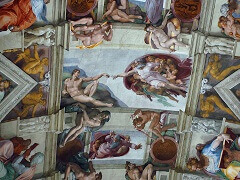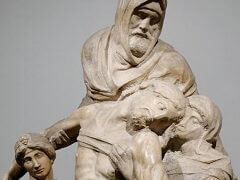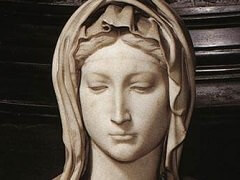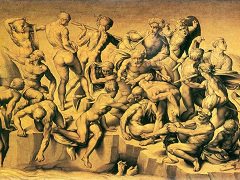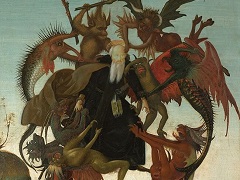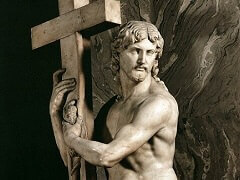10 Secrets of Pieta by Michelangelo

In the Pieta, Michelangelo approached a subject which until then had been given form mostly north of the Alps, where the portrayal of pain had always been connected with the idea of redemption: it was called the "Vesperbild" and represented the seated Madonna holding Christ's body in her arms. But now the twenty-three year-old artist presents us with an image of the Madonna with Christ's body never attempted before. Her face is youthful, yet beyond time; her head leans only slightly over the lifeless body of her son lying in her lap. The body of the dead Christ exhibits the very perfection of research in every muscle, vein, and nerve. No corpse could more completely resemble the dead than does this. There is a most exquisite expression in the countenance. The veins and pulses, moreover, are indicated with so much exactitude, that one cannot but marvel how the hand of the artist should in a short time have produced such a divine work.
One must take these words of Vasari about the "divine beauty" of the work in the most literal sense, in order to understand the meaning of this composition. Michelangelo convinces both himself and us of the divine quality and the significance of these figures by means of earthly beauty, perfect by human standards and therefore divine. We are here face to face not only with pain as a condition of redemption, but rather with absolute beauty as one of its consequences.
10 Secrets of Pieta by Michelangelo
1. This "Pieta" is the only Michelangelo artwork bearing the artist's name. He added it after overhearing a viewer misidentify the work as being that of another artist.
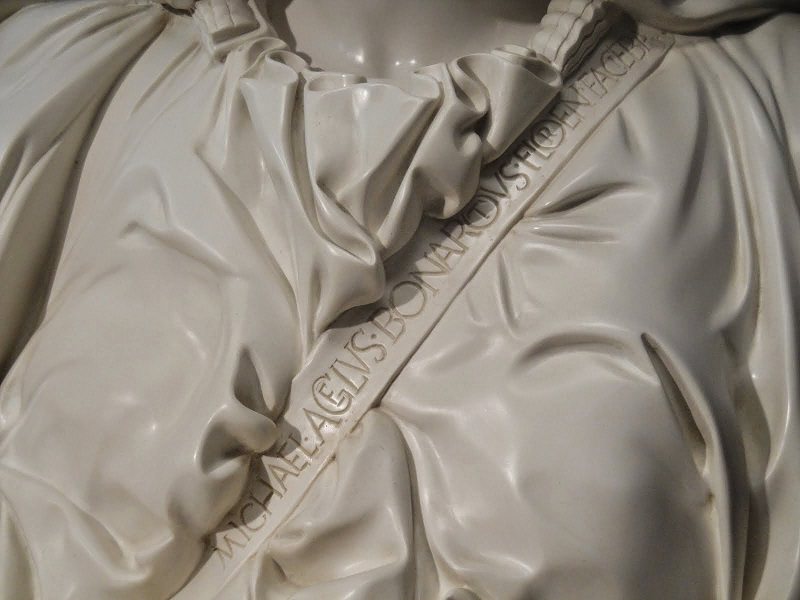
2. He may have signed "Pieta" twice. During a repair project in the early 1970s, restorers discovered the letter "M" engraved on the Virgin Mary's left palm. Because it was cleverly worked into
the lines of the sculpture's skin, it had not been previously detected. The monogram may stand for Michelangelo, Mary or both.
3. Although he worked in Florence most of his life, Michelangelo sculpted the "Pieta" during a five-year period he spent in Rome. It was commissioned by Cardinal de Billheres.
4. Four fingers on Mary's left hand were broken and restored in 1736.
5. The loan of "Pieta" to the 1964 World's Fair in New York City was a high-security undertaking. A bulletproof enclosure consisting of two and a half tons of Plexiglas ensured the statue's safety.
Electric-powered conveyor walkways kept crowds of viewers moving along.
6. Its trip to the World's Fair was the first time the statue had left Rome since its inception. The precious cargo in its triple packing crate weighed in at just under six tons.
7. The packaging created for the sculpture's Atlantic crossing was designed to withstand a shipwreck. If the ship went down, the crate would float. If the statue partially sunk, a radio
transmitter inside the crate would serve as a location device.
8. In May 1972, a delusional Laszlo Toth damaged the "Pieta" with a hammer. After repair work was complete, the Vatican had the marble statue encased in a triple layer of bulletproof glass.
9. Among the most difficult damage to repair was Mary's eyelid, which took approximately 20 tries before the restorers got it right.
10. It took technicians several months to sort and identify all the fragments of marble dislodged by Toth's hammer. The entire restoration took about 10 months.


